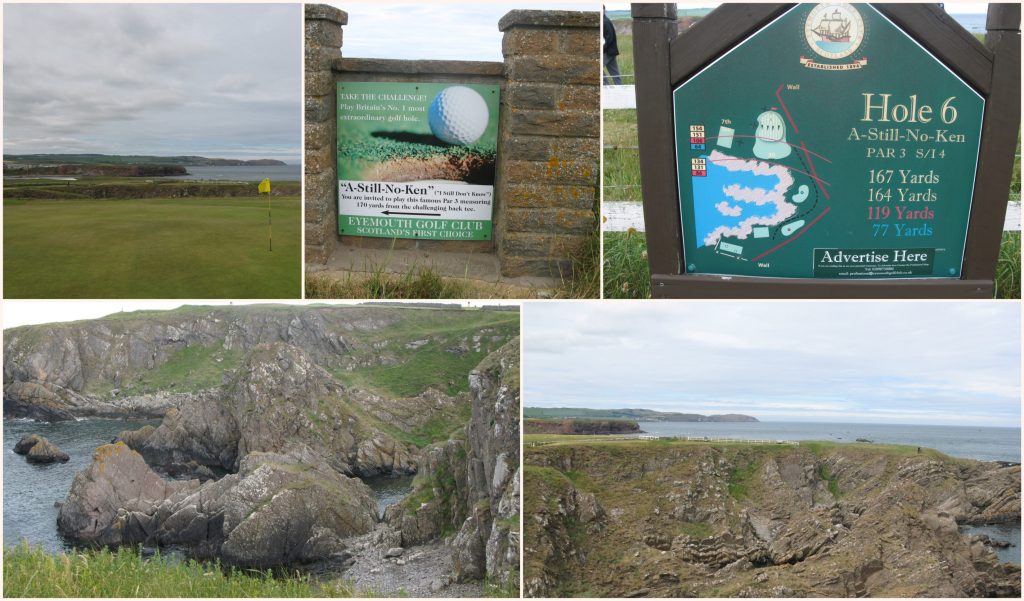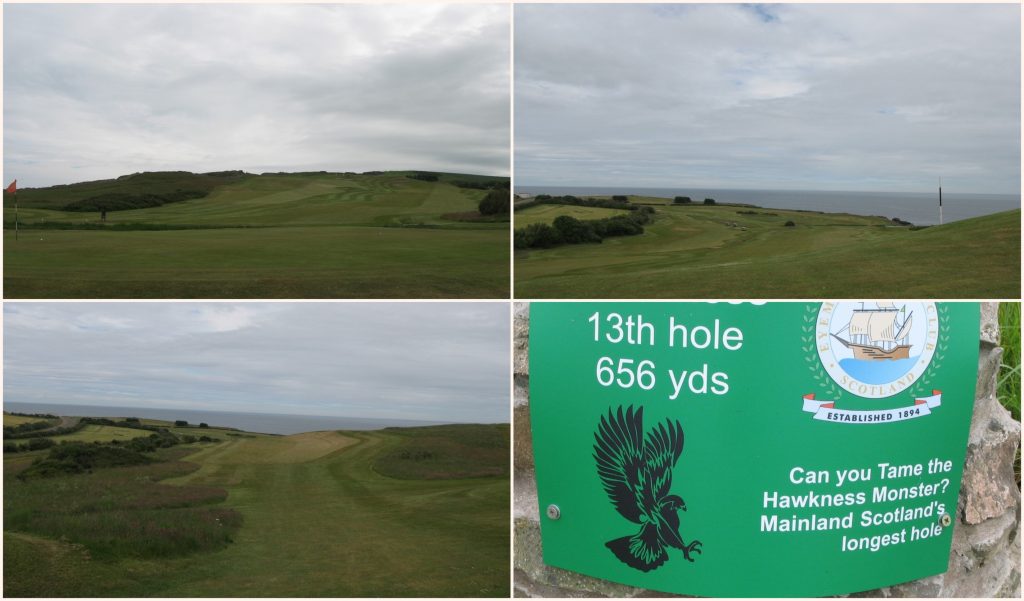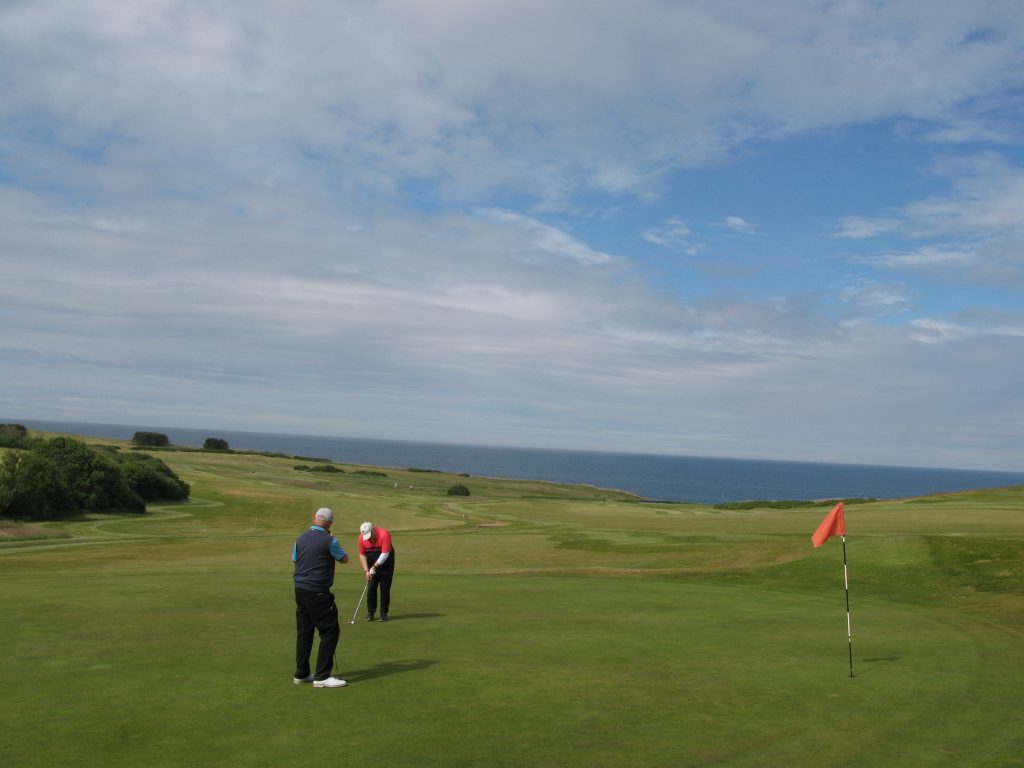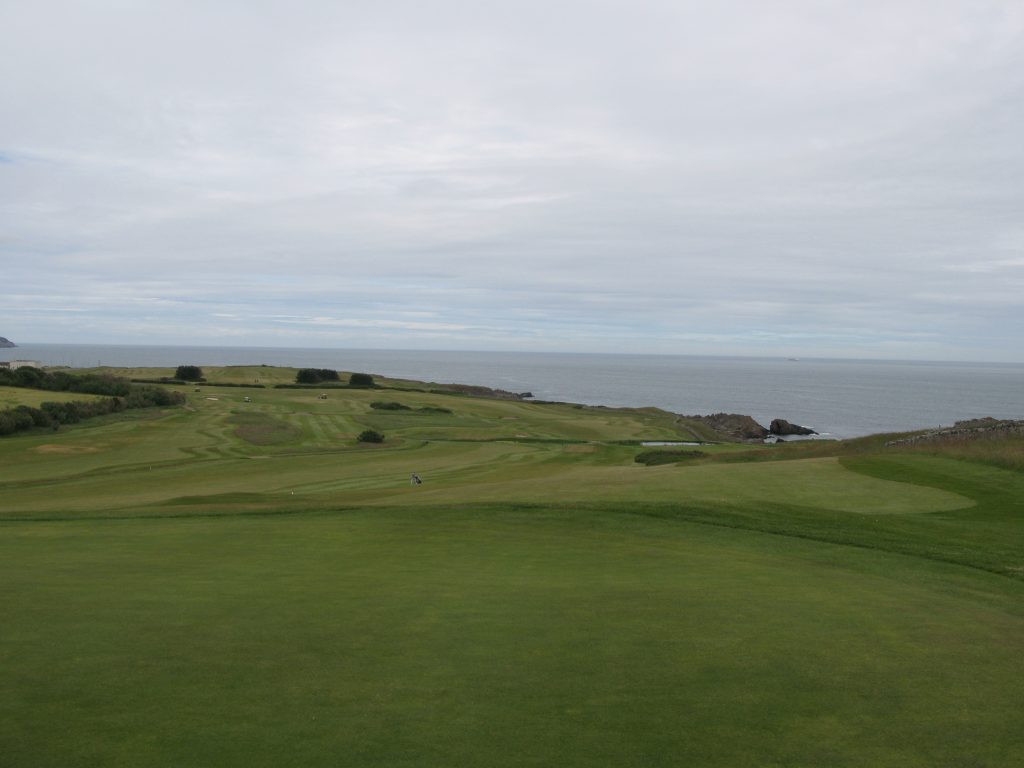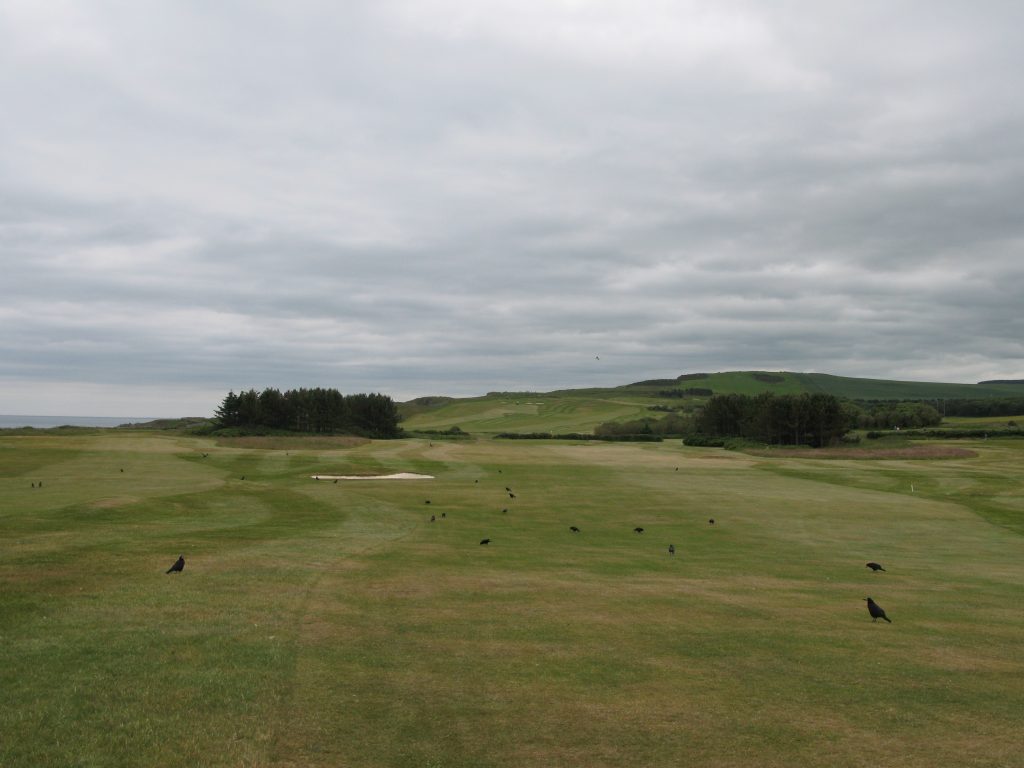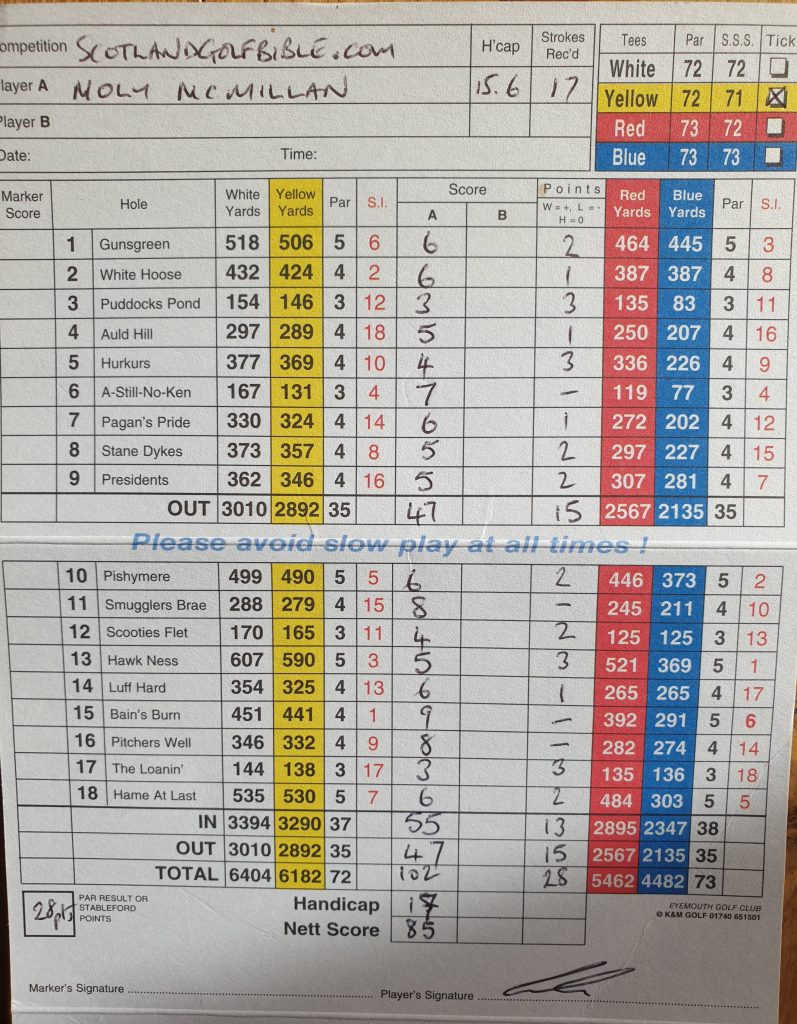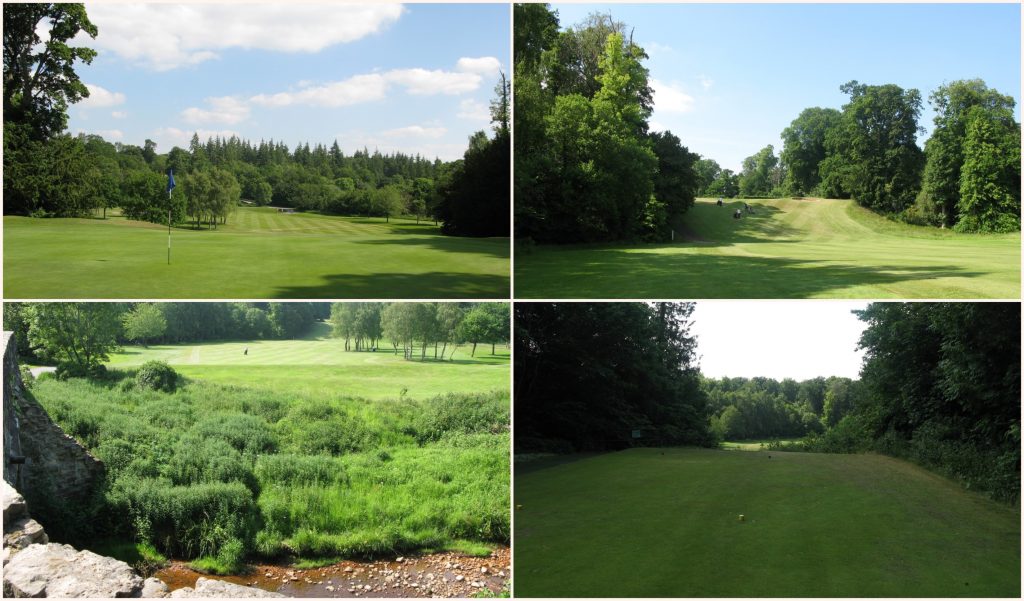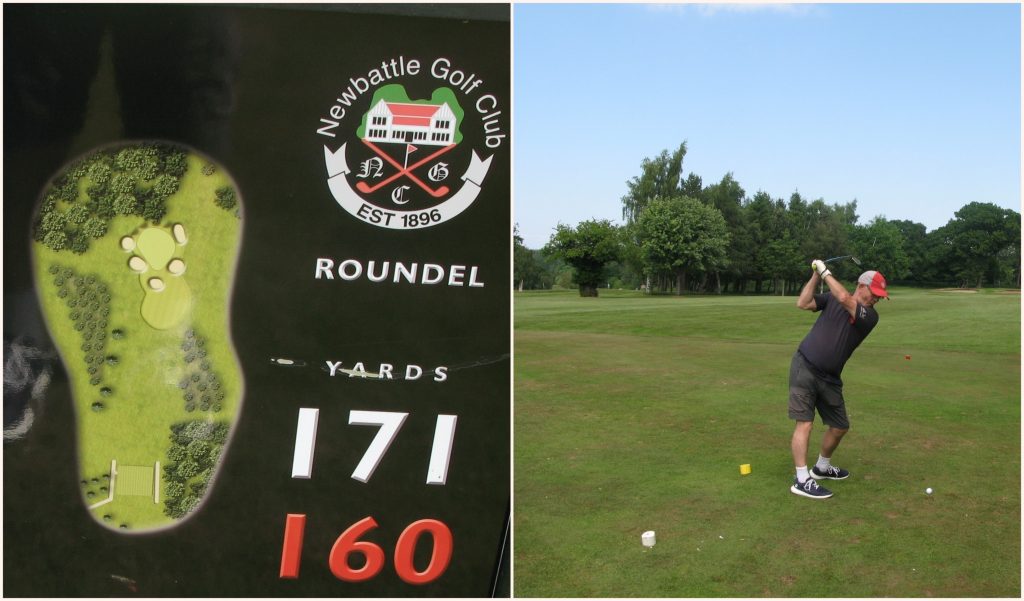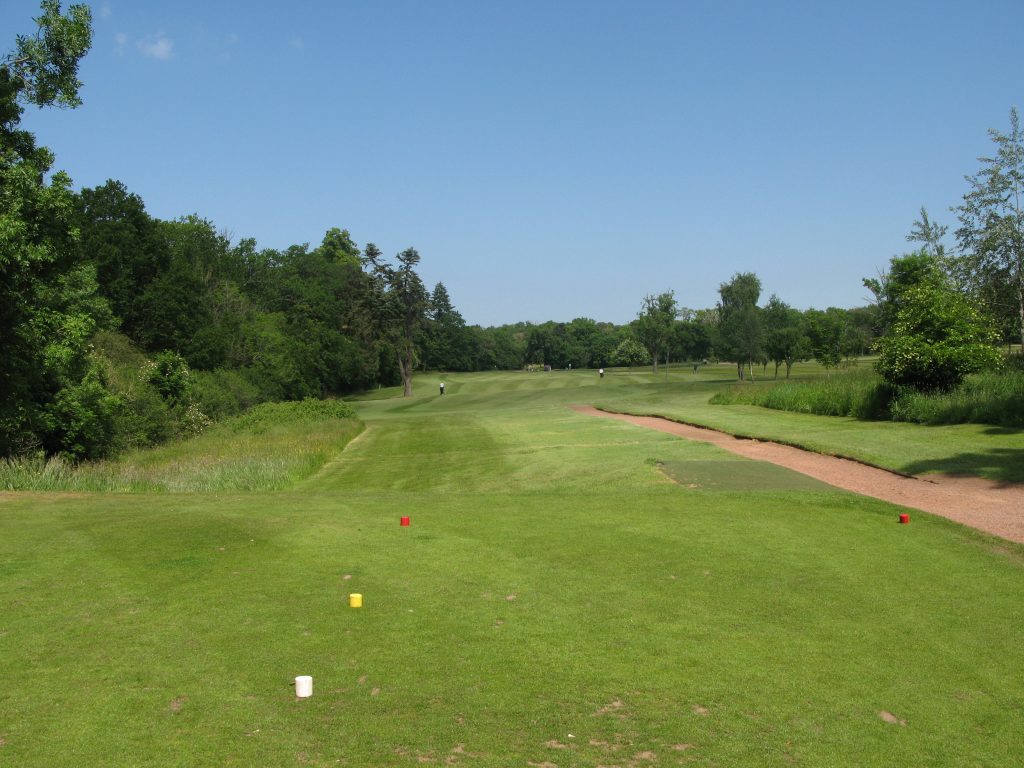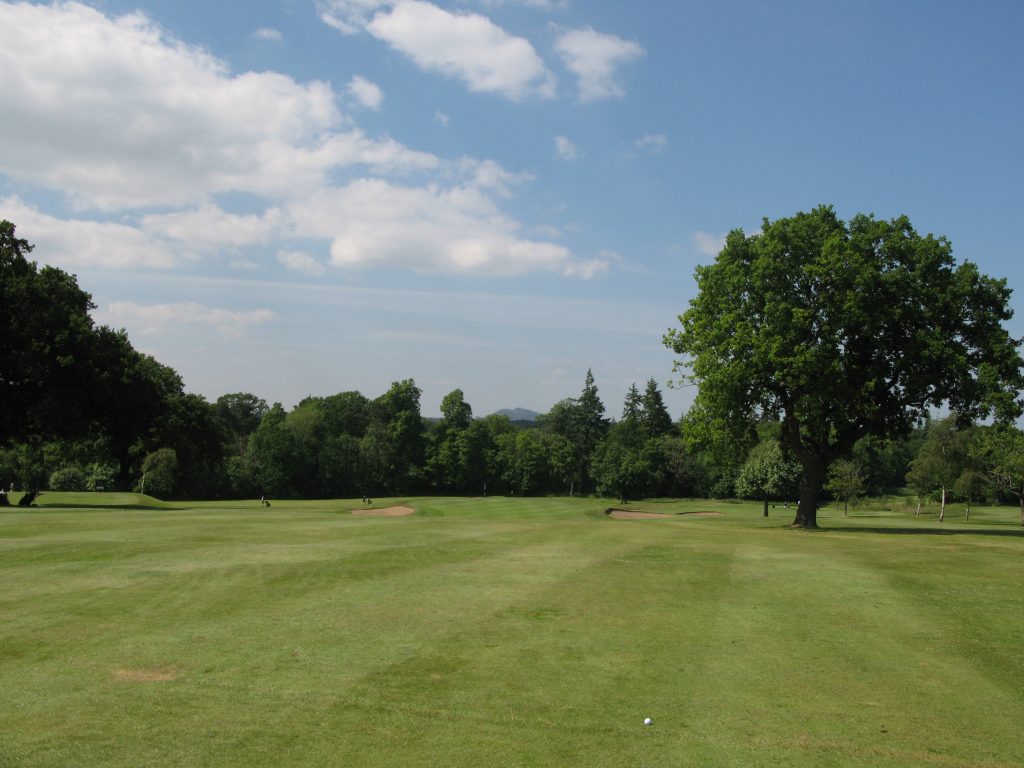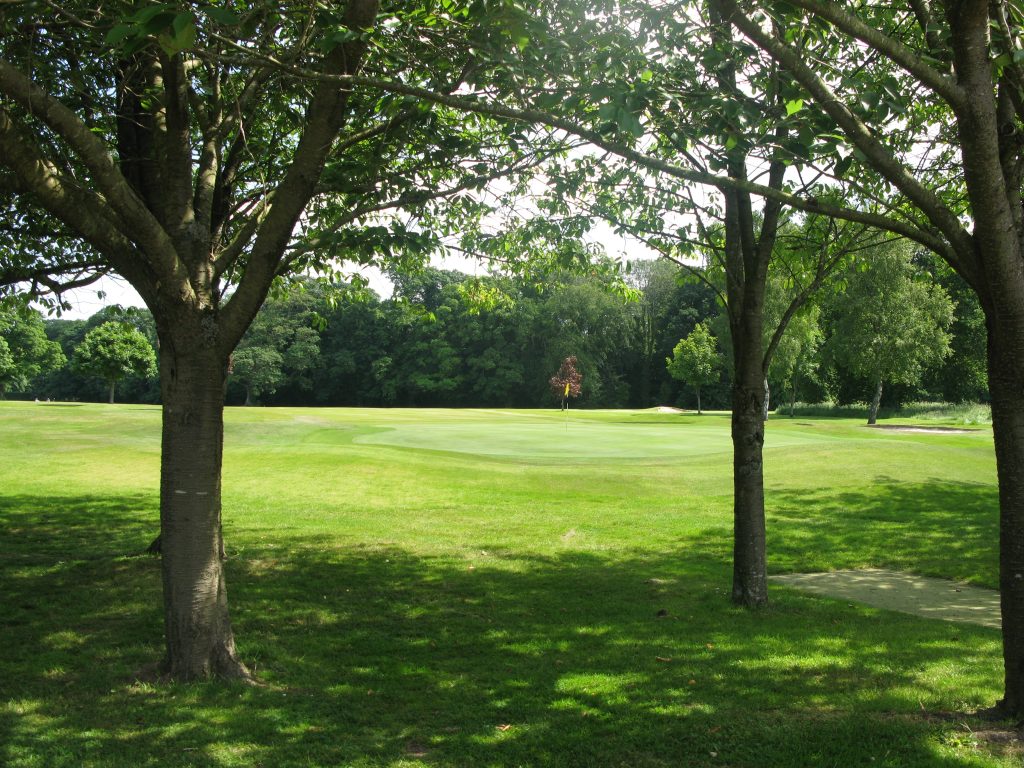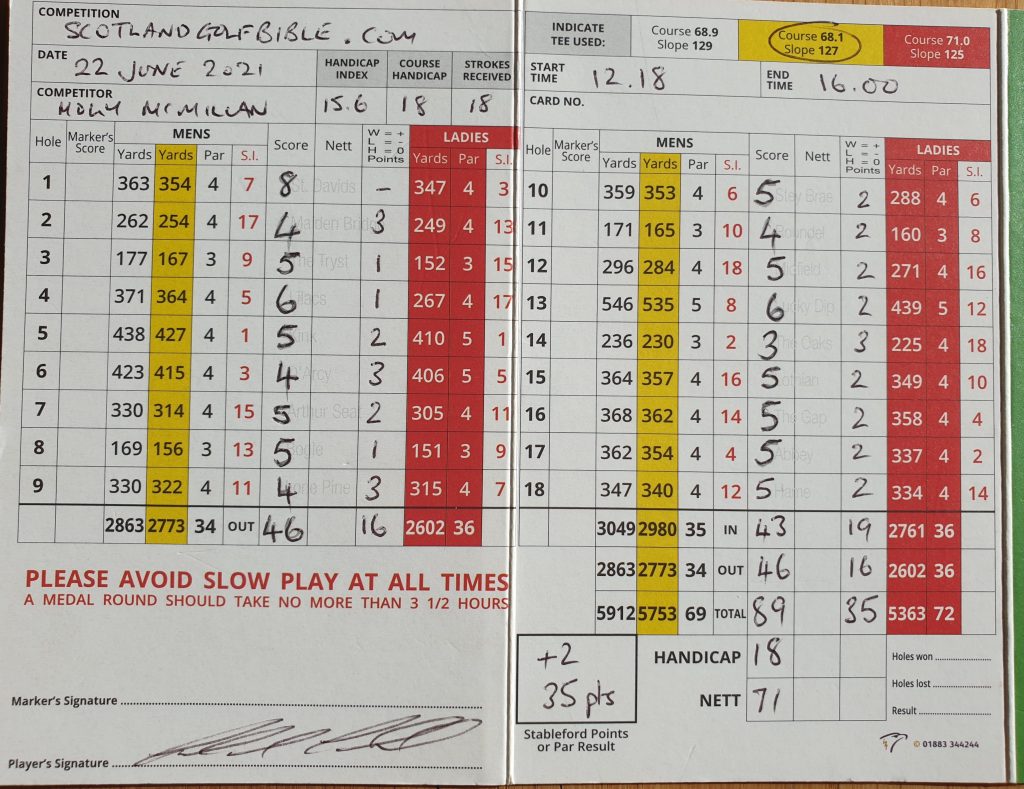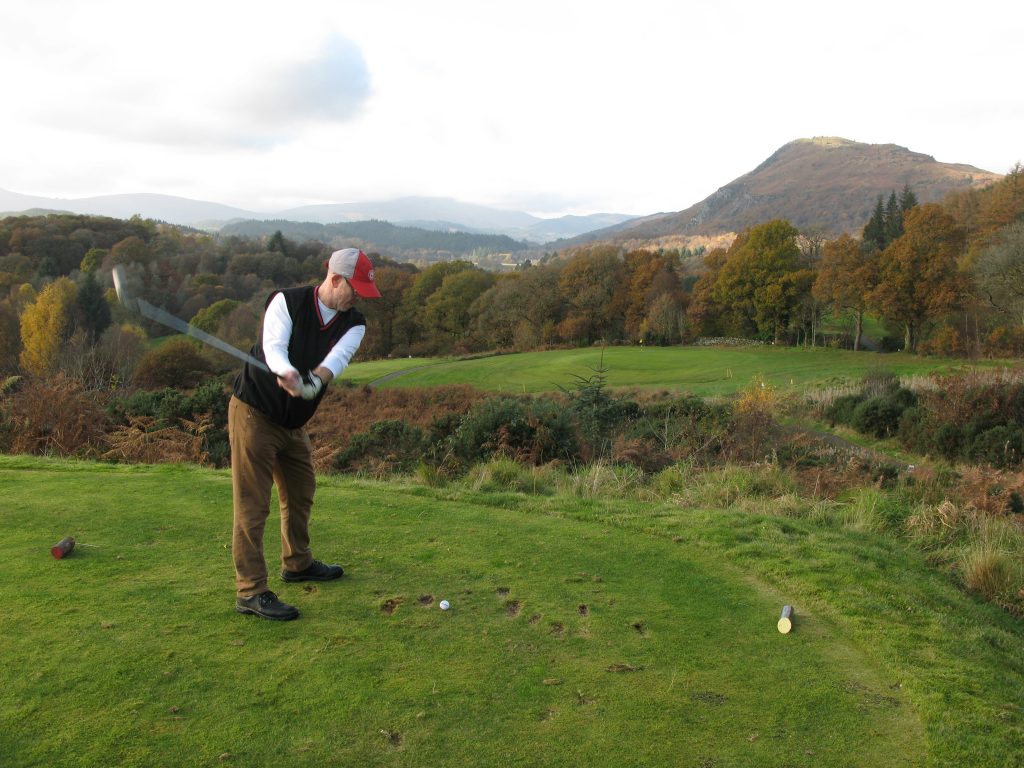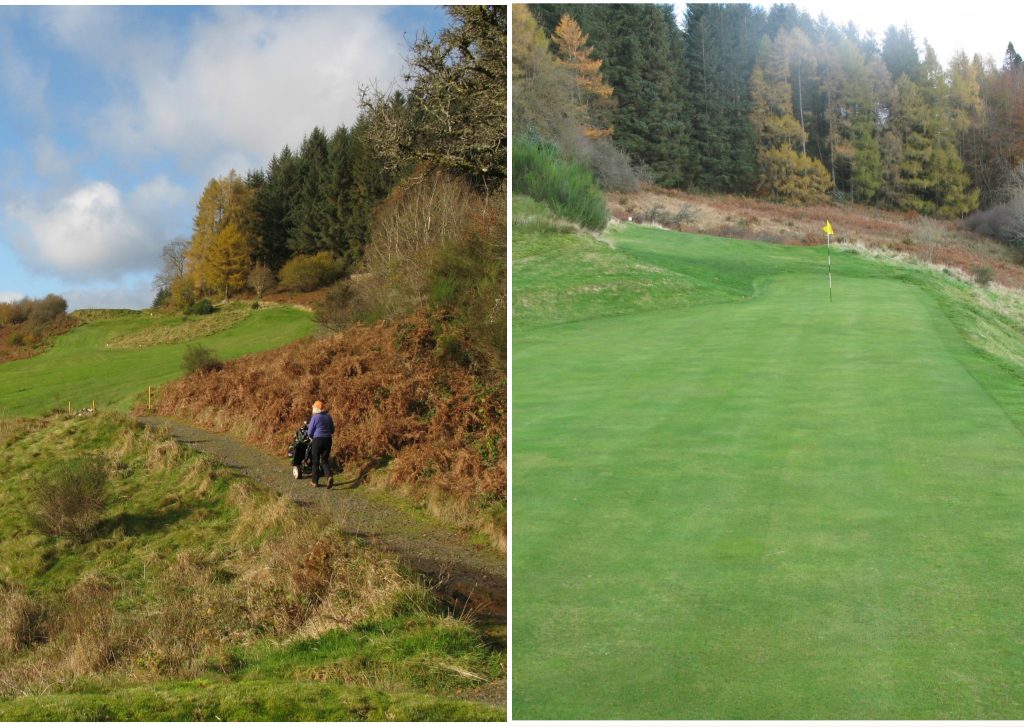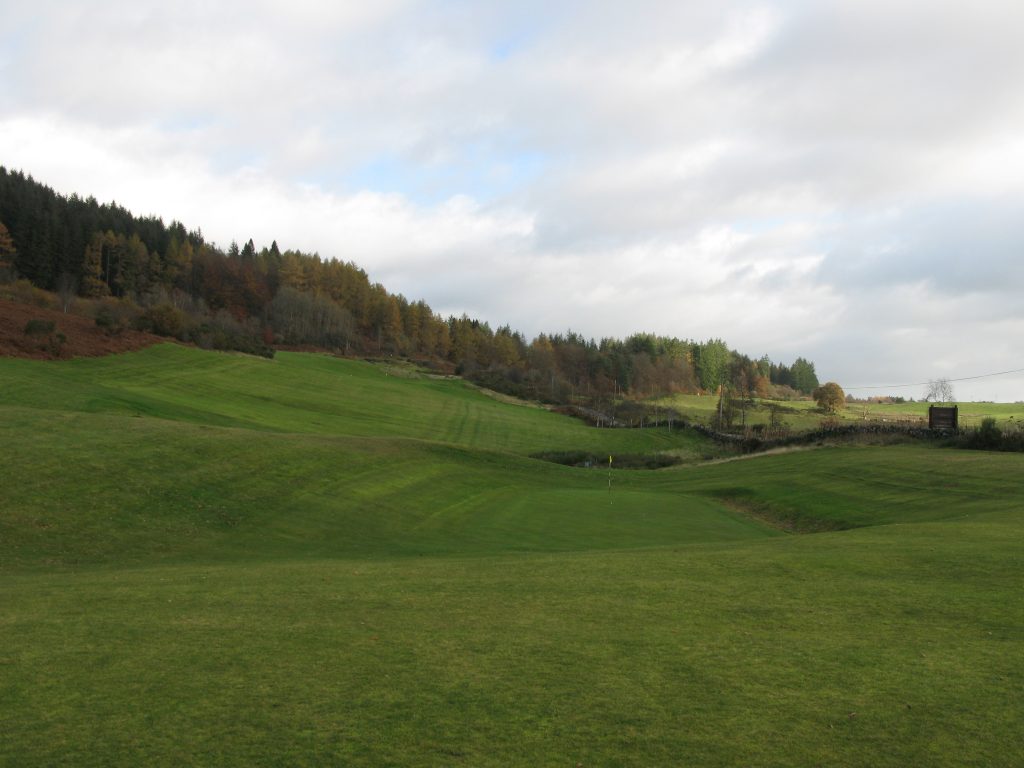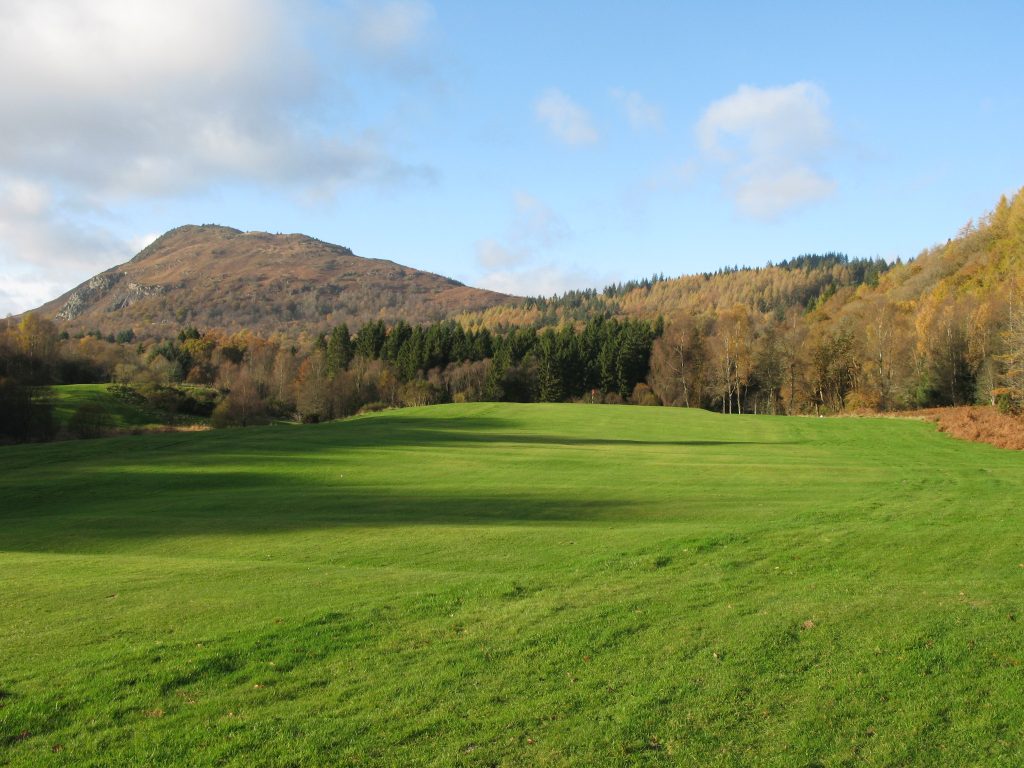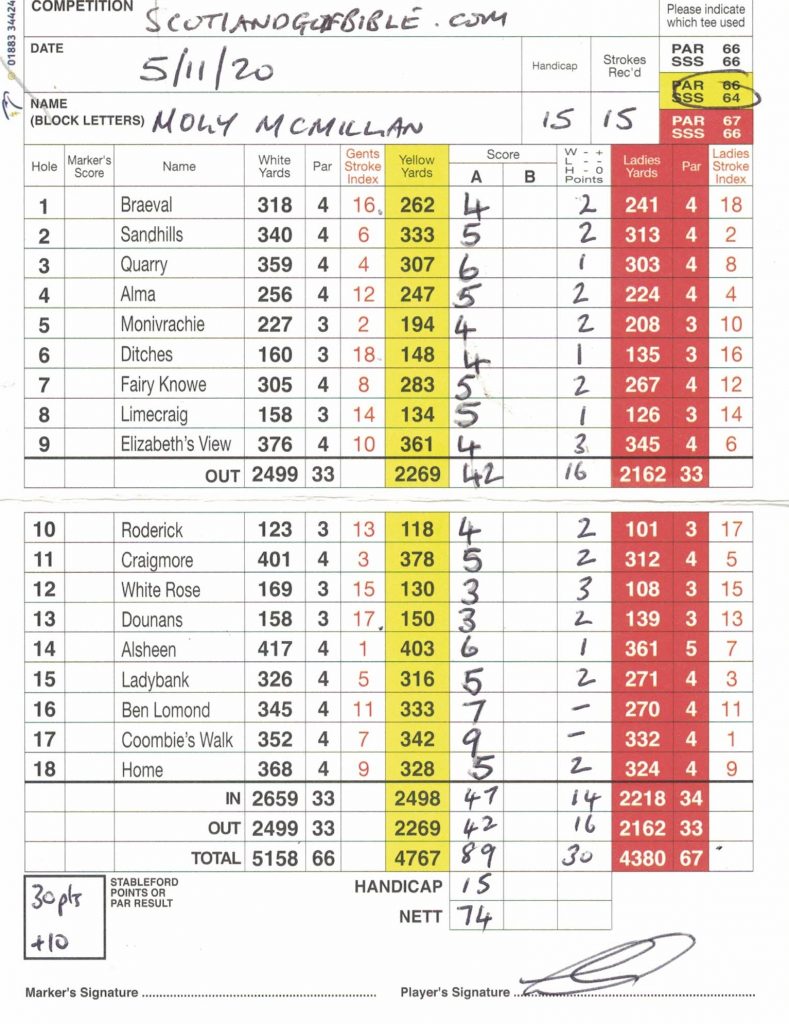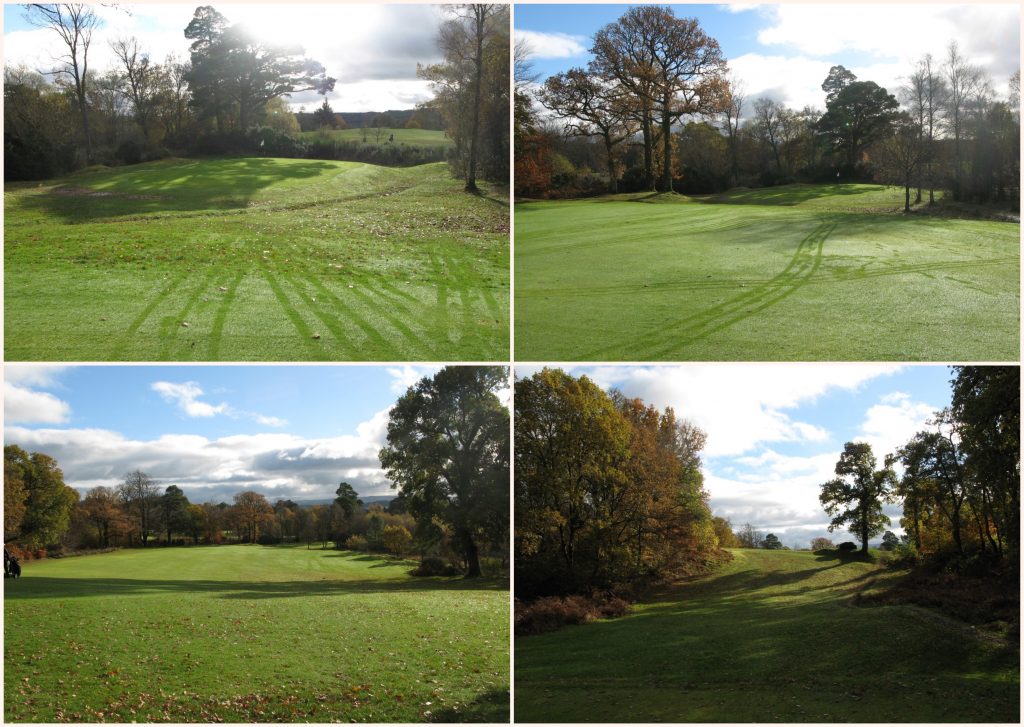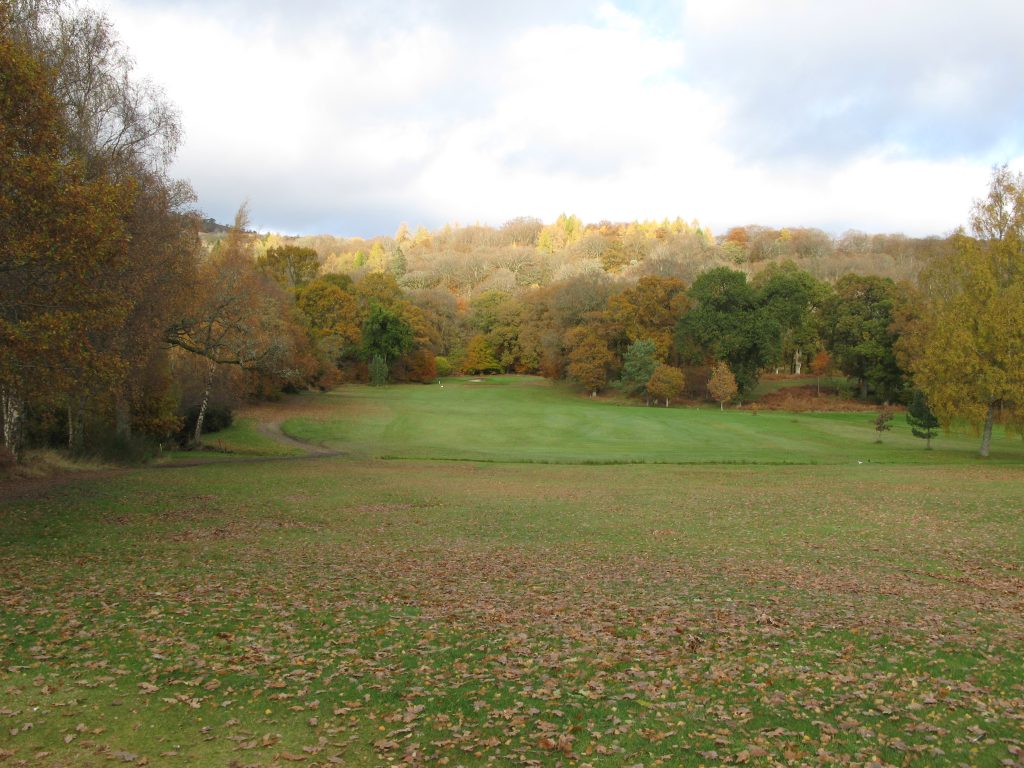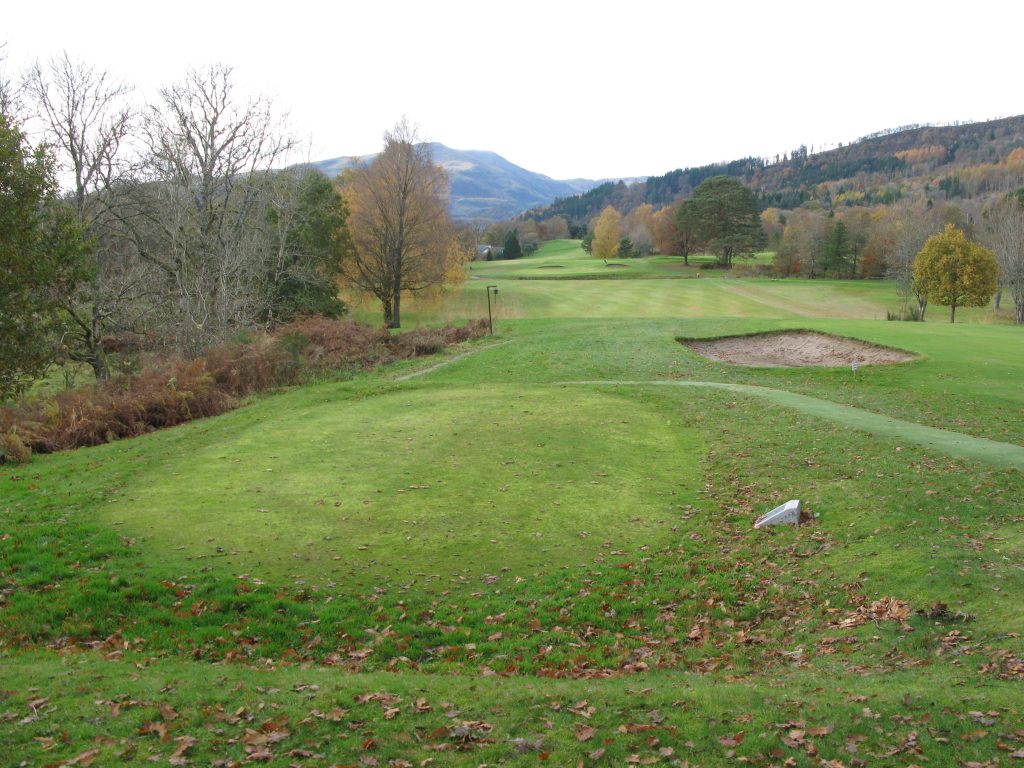Not one, but two notable challenges making it worth the drive, but mainly for the ‘fish n’ chips’ and a warm welcome.
Round £37.50. Par 72. Course Rating / Slope Rating (yellow) 70.2 /122. Value (out of 5) – 3.5
I’m glad I don’t overly research courses before I play and I learnt long ago to ignore the marketing hype golf clubs use on their websites. It’s similar to reading the tantalising comments on the latest ‘best selling’ book, before you consign it to the charity shop after 50 pages!
Therefore, please ignore “The club was formed in 1894” – the original 9 hole course is completely gone and has been replaced by a ‘home made’ design in 1997 on a different piece of arable (not links) land, known as Gunsgreen Hill, to the south-east of the original course. The course feels like a new ‘parkland’ layout, before saplings mature to properly frame the course.
It is worth playing Eyemouth though; it’s good value, has a couple of notable challenges (more of below) and excellent fresh locally caught ‘fish ‘n chips’, served in the clubhouse restaurant that has long reaching views of the Berwickshire coastline.
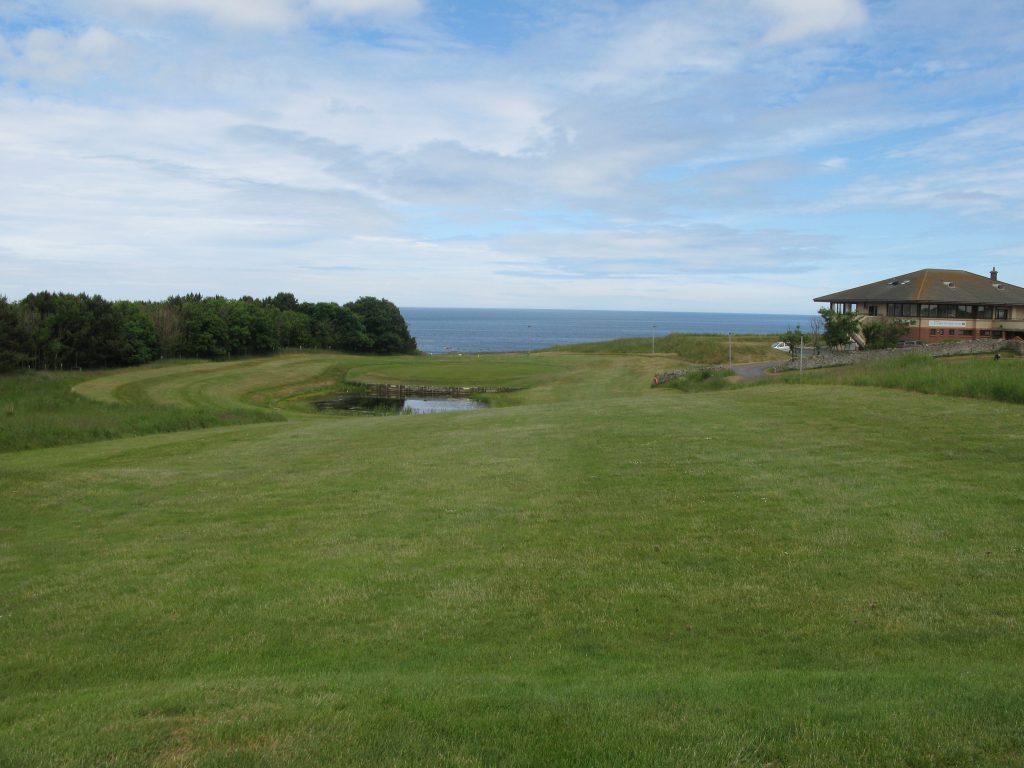
It’s certainly a meaty, if not fishy, course, which has hosted a number of regional and Scottish amateur competitions. Many of the longer holes playing uphill are very difficult, none more so that the 450 yard par four 15th hole, the stroke index 1; albeit, at 450 yards, it is still 200 yards shorter than one of the two ‘challenge’ holes – the par five 13th, cheesely named ” The Hawkness Monster”, at 656 yards it is reputedly Scotland’s longest hole; thankfully it is all downhill. On the day I actually parred the longest hole in Scotland, yet scored a quadruple bogie 9 on the Par 4 15th, That’s golf in a nutshell.
The other notable, and more attractive, hole, is the 6th; curiously named ‘A Still No Ken’ [‘I still don’t know’] it is a visually stunning mid-iron hole over craggy coastline, at 167 yards from the white tee, albeit the actual carry required is only about 140 yards. It’s all in the mind. Played into a stiff North Sea breeze, this would obviously compound the difficulty. All 3 of us playing (Brian and Frank being my partners), found the sea. On reflection I would call the hole something like ‘North Sea Graveyard’.
We paid through www.golfnow.co.uk and received about 20% off the ‘rack rate’ prices. Golfnow, has been a great development for peripatetic golfers who prefer to not join a club, but as yet less than 50% of Scottish clubs allow this means of booking, and disappointingly, hardly any of the premier clubs. This is a shame and the pricing of the top100 clubs remains elusively high, compared with the annual fees paid by their members; the ‘must play’ courses leveraging their attractiveness, which I guess is understandable.
The course was in decent, but not great, condition when we played, despite it being high season; the tees and very large greens were no more than average. Some of the greens were very tricky, most notably the 11th, where you couldn’t afford to be over the back of the green. The fairways are wide, but miss them and the rough is deep – there is no semi-rough to speak of. Although in dry seaside conditions, this might feel like a links, it is arable land, and I consider it a parkland course.
If you plan to play Eyemouth, I recommend considering a buggy if you’re not as fit as you once were. More importantly, the ‘fish ‘n chips’ in the clubhouse were as good as I’ve tasted anywhere. Those, and the very friendly staff at the club, make it a decent place to visit and play.
Finally, in writing about Eyemouth, I came across an extraordinary sporting story in the excellent https://www.golfsmissinglinks.co.uk/ web site, which charts the long lost history of Scottish Links. In the 1880s, during which time golf was played on a 5 hole course around the Eyemouth beach fort, the world famous cricketer, WG Grace actually played two seasons for Eyemouth cricket team. Now there’s a context for a film.
Course Type: Parkland
Par 72 (4 par 5s, 10 par 4s, 4 par 3s)
Distance: 6182
Moly’s Gross score: 102
